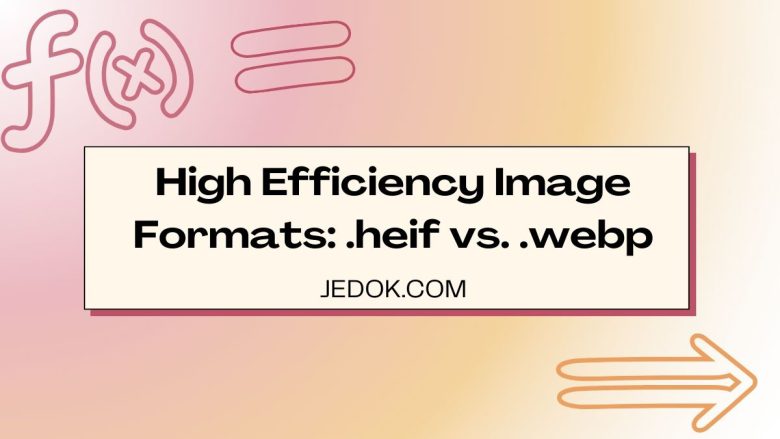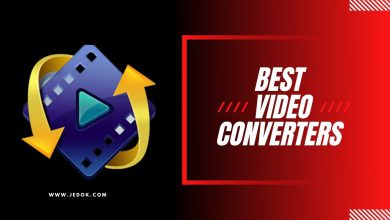
Today’s digital age has raised the need for high-efficiency image formats. It has never been more crucial. The demand for high-quality images and faster load times is increasing. Picking the right image format can greatly impact your website. It affects speed and user experience. Two of the latest image formats are .heif (High-Efficiency Image Format) and .webp. Both have better compression and quality than JPEG. But, which is better for your needs?
In this guide, we will compare .heif and .webp. We will look at their features, benefits, and uses. We’ll also show you jedok.com. It’s an online tool for easily converting images between these formats.
Understanding .heif and .webp
What is .heif?
HEIF is a modern image format. It was created by the Moving Picture Experts Group (MPEG). It uses the High-Efficiency Video Coding (HEVC) or H.265 compression standard. This standard also compresses high-definition video. HEIF is meant to store images and image sequences well. It makes them higher quality and smaller than older formats like JPEG.
Key Features of .heif:
- Superior Compression: HEIF can compress images to half the size of JPEGs without losing quality.
- Support for Multiple Images: HEIF can store multiple images in a single file, making it ideal for burst photos and animations.
- Advanced Metadata: HEIF supports extensive metadata, including image edits, depth maps, and more.
- Transparency and Layers: HEIF supports transparency and can store multiple image layers, similar to PNG.
What is .webp?
WebP is an image format developed by Google. It offers both lossy and lossless compression. WebP aims to create smaller, richer images that make the web faster. Modern web browsers widely support it. They use it because it is efficient.
Key Features of .webp:
- Efficient Compression: WebP achieves smaller file sizes while maintaining high image quality. It can reduce image sizes by up to 34% compared to JPEG.
- Lossy and Lossless Modes: WebP supports both lossy compression (for smaller file sizes) and lossless compression (for higher quality).
- Transparency: WebP supports alpha transparency, making it a good replacement for PNG.
- Animation: WebP supports animation, allowing it to replace GIFs with smaller file sizes and better quality.
Comparing .heif and .webp
Compression and Quality
Both HEIF and WebP compress well. They greatly reduce file sizes without hurting image quality. However, HEIF compresses slightly better. It does this because it uses the HEVC standard.
HEIF:
- Offers superior compression efficiency.
- Maintains high image quality, even at lower file sizes.
- Ideal for storing high-resolution images and sequences.
WebP:
- Provides excellent compression for both lossy and lossless modes.
- Slightly larger file sizes compared to HEIF, but still much smaller than JPEG and PNG.
- Highly suitable for web use due to widespread browser support.
Browser and Software Support
When it comes to support, WebP has broader acceptance. It works in modern web browsers and editing software. Most major browsers support WebP. These browsers include Chrome, Firefox, Edge, and Opera. WebP is an excellent choice for web developers.
HEIF:
- Supported by Apple devices (iOS and macOS) and some Android devices.
- Limited support on web browsers, primarily supported through additional plugins or extensions.
- Widely supported by modern image editing software, including Adobe Photoshop and Lightroom.
WebP:
- Supported by all major web browsers.
- Increasingly supported by image editing software.
- Ideal for web use due to its broad acceptance.
Use Cases
The choice between HEIF and WebP often depends on the specific use case.
HEIF:
- Photography: Ideal for professional photographers and graphic designers who need to store high-quality images with advanced features like depth maps and transparency.
- Mobile Devices: Perfect for mobile devices where storage space is limited, and efficient compression is crucial.
- Image Editing: Suitable for use in image editing software where advanced features and high quality are needed.
WebP:
- Web Development: Excellent for web developers looking to improve website load times and performance. Its broad browser support makes it a go-to choice for web images.
- E-commerce: Ideal for e-commerce sites where fast loading, high-quality product images are essential.
- Social Media: Suitable for social media platforms needing to balance image quality and file size for quick uploads and sharing.
Converting Between Formats
Switching between image formats can be a hassle, but online tools like jedok.com make it easy. Jedok.com provides a user-friendly HEIF to WebP converter that simplifies the process.
Step-by-Step Guide to Using Jedok.com
1. Access the Converter
Visit Jedok.com and navigate to the HEIF to WebP converter section.
2. Upload Your HEIF Images
Click on the “Select HEIF file” button to upload your HEIF images. You can upload multiple files at once for batch conversion.
3. Convert to WebP
Once your files are uploaded, click on the “Convert” button. The tool will process your images and convert them to WebP format.
4. Download Your WebP Images
After the conversion is complete, download the converted WebP files to your device. You can now enjoy the benefits of smaller file sizes and superior image quality.
Why Choose Jedok.com?
- User-Friendly Interface: The website offers a simple and intuitive interface, making the conversion process easy for users of all skill levels.
- Free to Use: The conversion tool is completely free, making it accessible for everyone.
- No Software Installation: As an online tool, there is no need to download or install any software, which keeps your device clutter-free.
Conclusion
Both HEIF and WebP are efficient image formats. They have big advantages over older formats like JPEG and PNG. HEIF is great at compression and advanced features. But, WebP is known for its wide browser support and its ability to do both lossy and lossless compression.
Pros use HEIF for its better quality and features. WebP is ideal for web developers and online businesses. They want to improve website speed by using smaller, higher-quality images.
Understanding the strengths of each format is key. Using tools like jedok.com to convert between them can help you. It can help you optimize your digital image workflow. It will ensure that your images are high-quality and efficient. You might be improving your website, organizing photos, or sharing on social media. Picking the right image format matters a lot.


